Midleton Hurling and Football, Ladies Football and Camogie Club News
21 February, 2021
The key messages for this week:
- Update from GAA's COVID Advisory Group and Useful Numbers
- Lotto Jackpot reaches €20,000
- Proposed Membership Rates for 2021 & 3G Pitch Development
- Cork County Board Draw….Rebels’ Bounty tickets on sale
- Clonmult Ambush Centenary Commemoration
Midleton GAA…at the ‘Heart of the Community’. Ní neart go cur le chéile. There is no strength without unity.
COVID Update

It is the view of the GAA's Covid Advisory Group that on-field activity will not be permitted until Easter at the earliest after the Government clarified that inter-county Gaelic Games activity is not covered under the current Level 5 exemptions for elite sports.
For more details on GAA statement please click here.
In the interim, it is expected that the Government will publish an updated "Living with Covid" plan and we expect that this will provide clarity on when clubs and counties are likely to be allowed return to training and games in 2021.
In the absence of group on-field activity individual skill and fitness training is important. This will not only help maintain skill and fitness levels but will also help with our mental health and wellbeing.
We can see light at the end of the tunnel. Ní neart go cur le chéile. There is no strength without unity.
Useful Numbers
As Level 5 restrictions continue it is important to remember that you are not alone.
Here are some useful numbers to keep in mind
- Mental Health Information Line 1800 111 888
- Samaritans 116 123
- Pieta House 1800 247 247
- Aware 1800 80 48 48
- Women’s Aid 1800 341 900
- Men’s Aid Ireland 01 5543811
- Elder Abuse Helpline 1850 241 850
- Free 24/7 Text Line Text TALK to 50808
- Childline 1800 66 66 66 or Text 50101
- Alcoholics Anonymous 01 842 0700
- Gamblers Anonymous Cork 087 285 9552
- Gardaí 999 or 112
- Midleton Garda Station 021 4621550
Mega Lotto Results
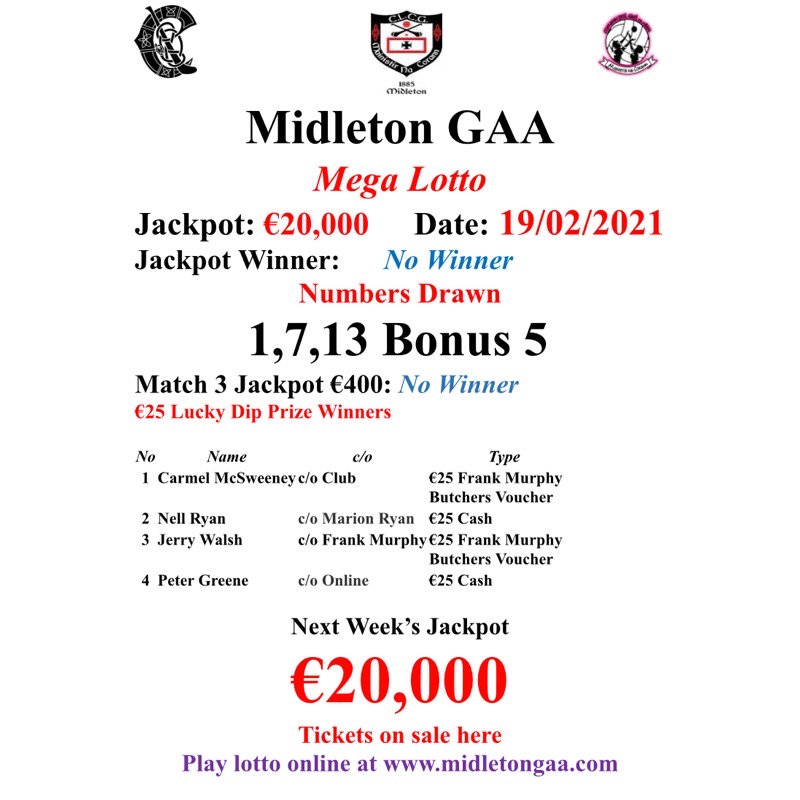
- 4 Lucky Dip Prize Winners this week
- The re-launched Lotto is a critical component of our fundraising for Park South. The support to date has been good, especially with the number of annual subscriptions that have been submitted.
- In total Midleton GAA will give out local business vouchers to the value of €3,800 every year as part of our “Shop Local, Buy Local” campaign.
- How to play: Go to https://www.klubfunder.com/Clubs/Midleton%20GAA/lotto select your numbers and number of draws to play. You can buy an annual ticket by selecting “50” from the “Number of Draws” to Play dropdown.
Proposed Membership Rates for 2021 & 3G Pitch Development
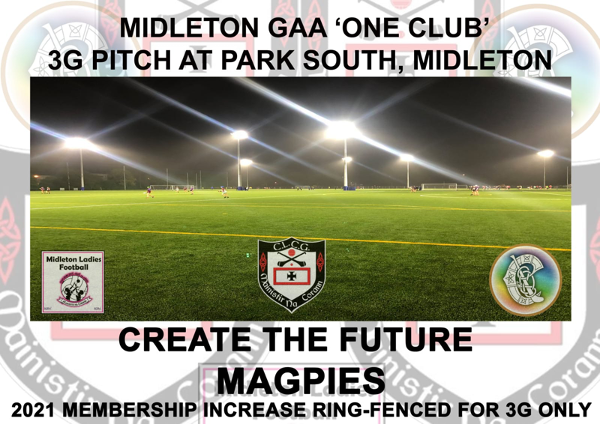
Recently members will have received, by email, a communication outlining proposed changes in Membership Rates for 2021 and the reasoning behind them.
If you didn’t receive an email but feel that you should have then please email secretary.midleton.cork@gaa.ie
***EXTRACT FROM RECENT COMMUNICATION***
- At an Executive meeting on 19th January the Club Executive approved membership rates for 2021. In line with the Club constitution these now need to be ratified by the members.
- These new membership rates (see detailed rates in Exhibit A) would raise approximately €35,445 more in membership in 2021 over 2020.
- This increase in membership will be ring fenced for and will be set aside to fund the development of a 3G pitch in Park South (see estimated costings and sources of funding in Exhibit B).
- The Club Executive are very conscious that whilst these are difficult times we believe that, with Park South, we have a once in a lifetime opportunity to put in place facilities that will serve future generations of the Club.
- The Club Executive are asking members to vote in favour of these membership fees for 2021 as a preamble to the development of a 3G pitch in Park South to commence in 2021.
Procedure for Voting
- Please review and read the detailed Questions & Answers and supporting Exhibits that have been prepared and approved by the Club Executive.
- Accompanying this document is a voting form. You can vote in one of 2 ways:
- Print the voting paper, indicate your voting preference, complete you name in block letters, then sign the form, scan the form and return by email to Club Secretary Vincent Reddy at the following email address secretary.midleton.cork@gaa.ie
- You may also vote by printing the voting paper, indicate your voting preference, complete you name in block letters, then sign the form, and then post it Vincent Reddy, Secretary Midleton G.A.A., Park South, Midleton, Co. Cork, P25 E025
- If you don’t have the facilities to print and scan the voting papers then email secretary.midleton.cork@gaa.ie to arrange for a printed copy of the voting form to be delivered and collected.
- If you have any question regarding the proposed membership increase and/or 3G development in Park South then please feel free to email Club Secretary Vincent Reddy at email address secretary.midleton.cork@gaa.ie. We will endeavour to answer any question within 5 days.
- In order to give people ample time to ask questions and receive replies about this once-in-a-generation development we will allow ample time for people to return voting papers. In this regard, completed voting papers should be received no later than 12 noon on 1 March 2021
***ENDS***
Rebels’ Bounty Draw
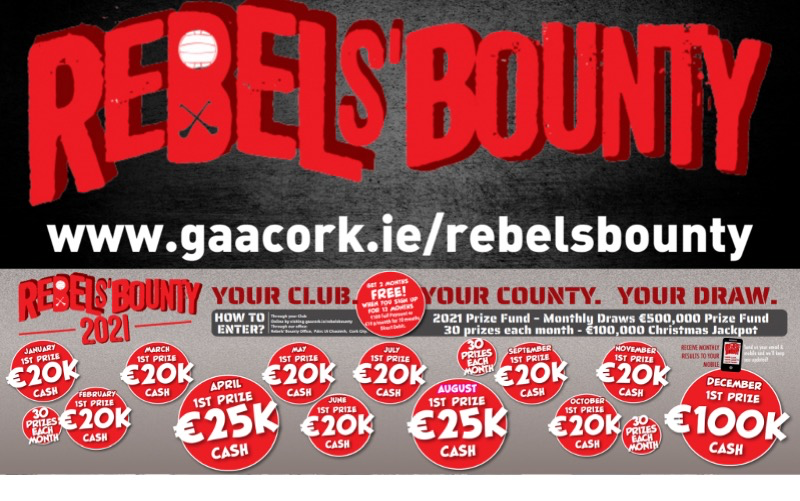
The Cork County Board Draw has been re-name Rebels’ Bounty 2021. This is a fund-raiser not just for the Cork County Board but also for GAA clubs within the county. Midleton GAA are promoting Rebels’ Bounty Draw as a vehicle to raise funds for our new facilities at Park South.
All monies collected, YES, that's 100% of it goes directly to the Midleton GAA club without any admin costs, any risks or any prize costs. Many long term members are renewing now and many new members joining due to the new attractive prizes.
As you can see from the above image, there is now a total prize fund of €500k with a Whopping €100k for December 21 Draw. There are 360 cash prizes in total per year.
Purchase a ticket to support the GAA and especially Midleton GAA – Magpies Abú
To sign up for the draw simply click on the joining link:
https://rebelsbounty.ergogroup.ie/prod/rebelsbounty/join-draw
If you have any queries/questions or need help purchasing a ticket, you can contact the following people who will be delighted to assist you. Many thanks for all your support over the years which has enabled Midleton GAA to thrive and remain a forward-thinking and proactive club and strive to always be better for all our members and our community.
Pat O Brien - Coordinator Club Draw Coordinator 086 8118815
Liam Ryan, Steve Sheehan, Pearse Mc Carthy, John Fenton, Diarmuid Ó Dálaigh
Go raibh maith agaibh. Thank you.
Ladies Football
Lidl Ireland are huge supporters of Ladies Football are both a local and National level. They have announced a new fundraiser which allows Clubs to raise up to €20,000.
All you have to do is download the Lidl app to your phone. We are asking everyone to support our Club.
Details are as follows :
.png)
Juvenile
Junior Infants Boys Pre-Registration
The ongoing Govid-19 government restrictions has meant that the most important boy’s team in the club, the new Fé6 Junior Infants Boys, haven’t been able to commence their GAA training yet. We hope that once the restrictions are lifted, this group will join all their teammates in Midleton GAA Club on the training fields. We also hope that official Club registration will take place when restrictions allow. In the meantime, if any parents of Junior Infant Boys wish to submit their details including name/ number/ email, they can do so to our Juvenile Secretary Michael Carroll at secretarybng.midleton.cork@gaa.ie or to 086-8362218.
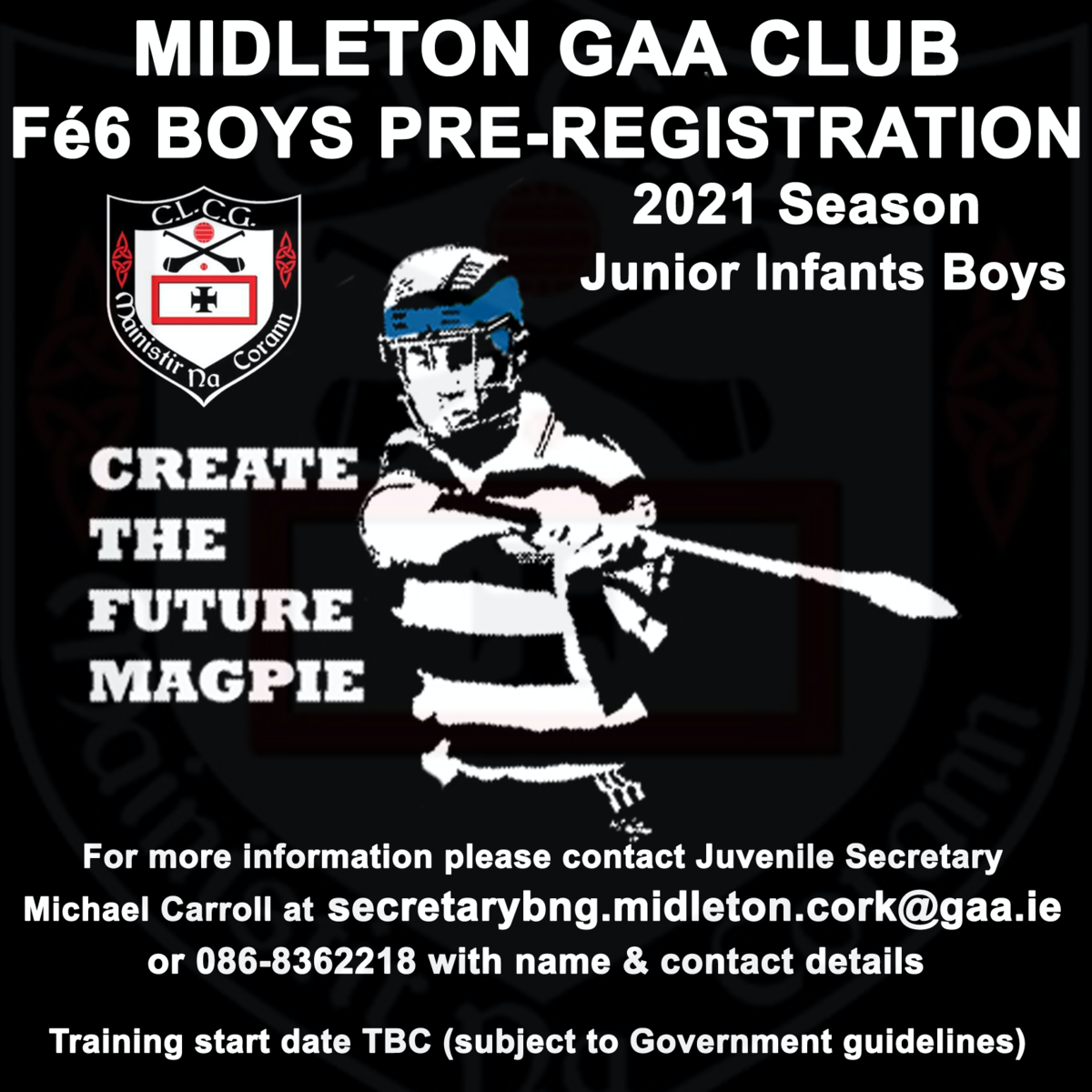
Safeguarding, Vetting & Coaching
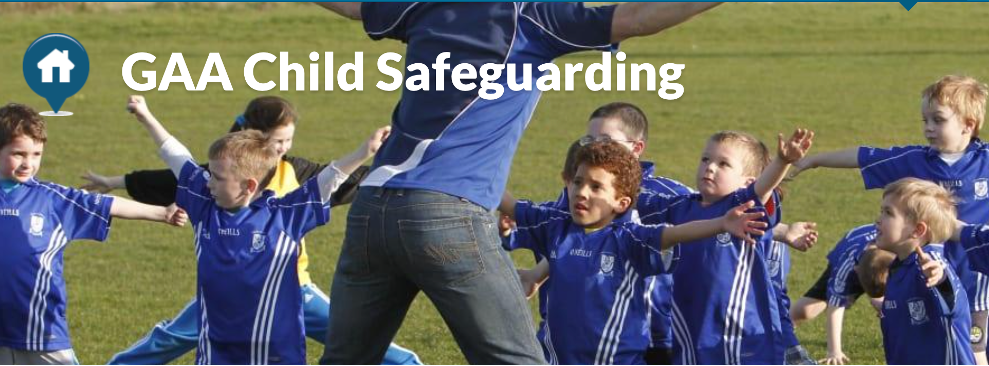
Safeguarding, vetting and coaching training are all mandatory requirements of any GAA club. To help us create a safe and enjoyable environment for the children who play Gaelic games in Midleton we are very active at the moment in updating our requirements.
A number of coaches have applied for Garda vetting due to the changes to the legislation which now mean that vetting is valid for three years only, as opposed to the previous rule which allowed for five years.
We recently hosted a Foundation coaching training with GDA Sean Crowley and those who participated on the night are currently completing the online piece following the introduction by Sean. This qualification will be completed with a practical session later in the year once we are back on the pitch.
Our virtual Safeguarding workshop which is booked for 2nd of March is now full. If you need to complete this workshop, please contact the Children’s Officer at ChildrensOfficer.midleton.cork@gaa.ie. We will book another session to facilitate all those who need it at the first available opportunity.
A huge correspondence drive from the club to all coaches who require updating has been ongoing for the last number of weeks. As a club there has been a phenomenal response to this with the majority active in updating requirements. This is highly appreciated by the club and will ensure our prompt and safe return to play once the restrictions are eased. Many thanks to all who are involved.
Blast from the Past
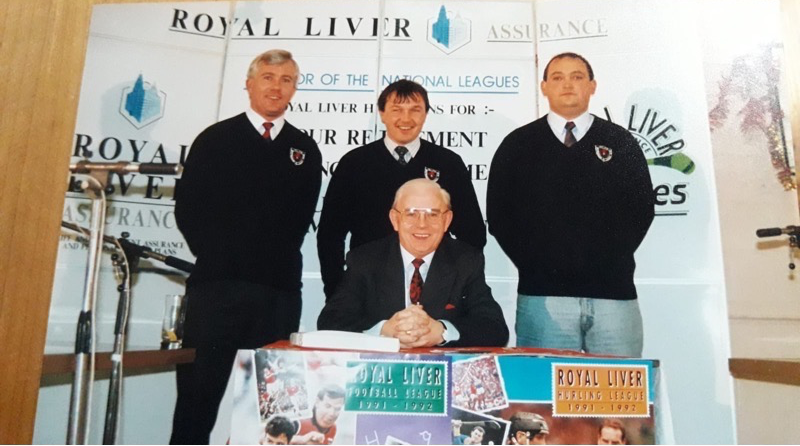
Royal Liver radio quiz recorded in Midleton GAA in Dec 1991 with Jimmy Magee, legendary broadcaster and 'memory man'. Midleton team of "Brainiacs" L to R John Slattery, Sean O'Brien and Ken Murray.
Park South Grounds - What a difference a few hours can make !!
The official Met Office figures back up what we all have felt regarding how wet the last week has been. Cork saw well over a month’s worth of rain in the past week (90mm of rain has fell in Cork versus monthly average of 71mm for February).
We know that the 2 seeded pitches in Park South are in the Dungourney River flood plan, and that they were in effect ‘Summer Pitches’ but the sight of the pitches covered by the water after the river broke its banks alarmed some.
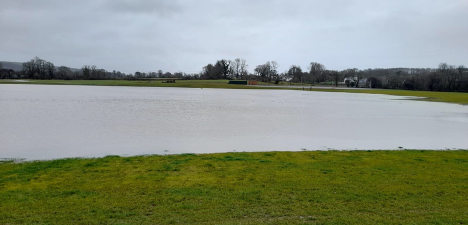
A few hours later the water has receded and whilst wet the pitches are not flooded. Mother nature and a lot of drainage work paying off !!
As an aside, work is being planned for these pitches as soon as COVID restrictions and the surface allows. This includes grass fertilisation, some spot surface remediation and procurement of goalposts and nets. Whilst obviously not wishing to rush using these pitches and run the risk of not letting the grass develop enough, it is anticipated that we will see usage of these pitches later in the year.
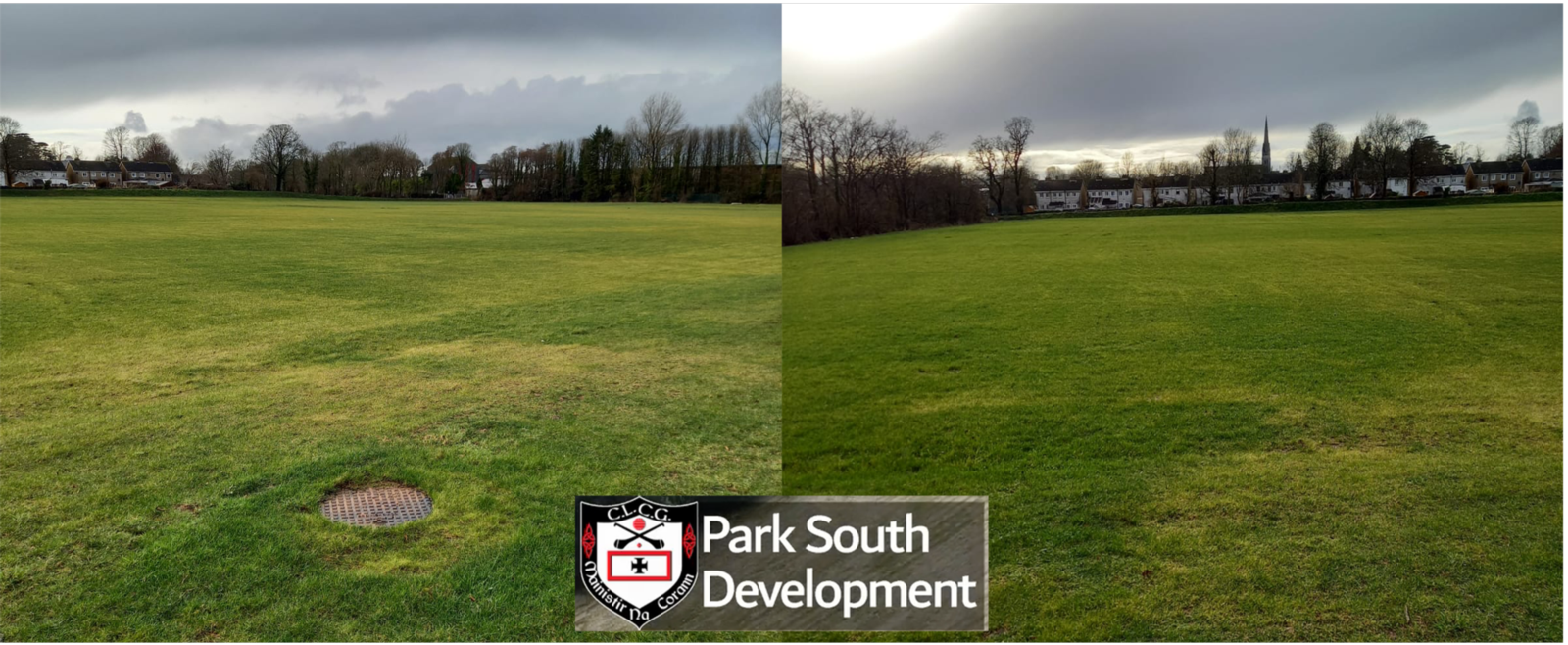



Clonmult Ambush Centenary Commemoration
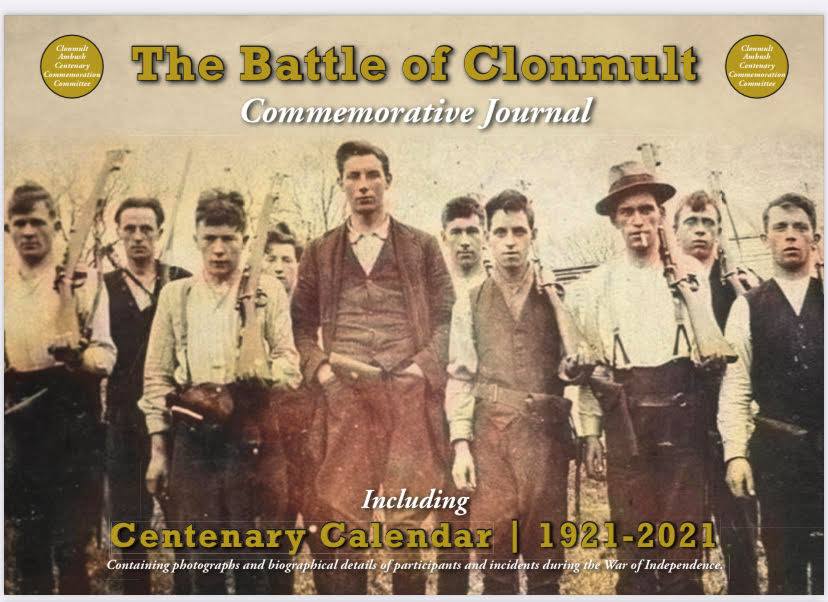
In other times the Centenary Commemoration of the Clonmult Ambush in Clonmult Memorial Park, Midleton would have taken place with larger crowds. Unfortunately, but understandably, it was Club Chairman Liam Ryan, who alone, laid a wreath of commemoration.
Ar dheis Dé go raibh a n-anamacha
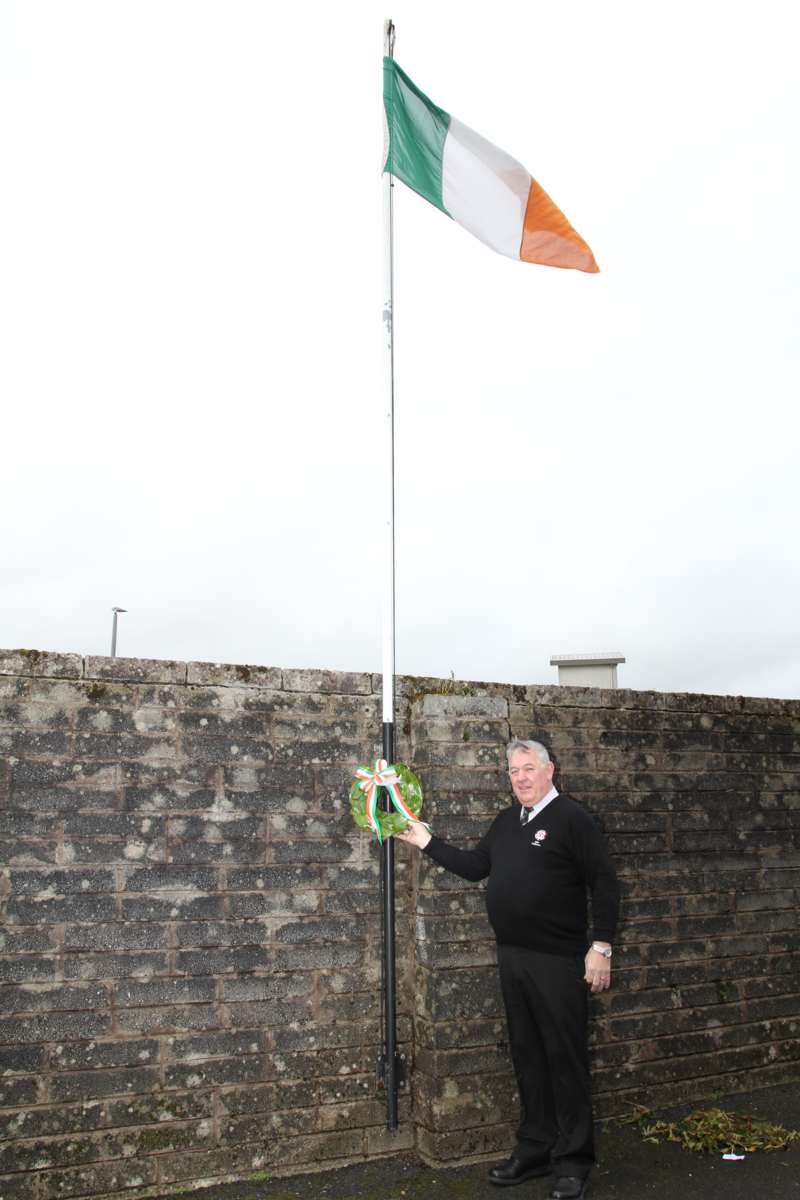
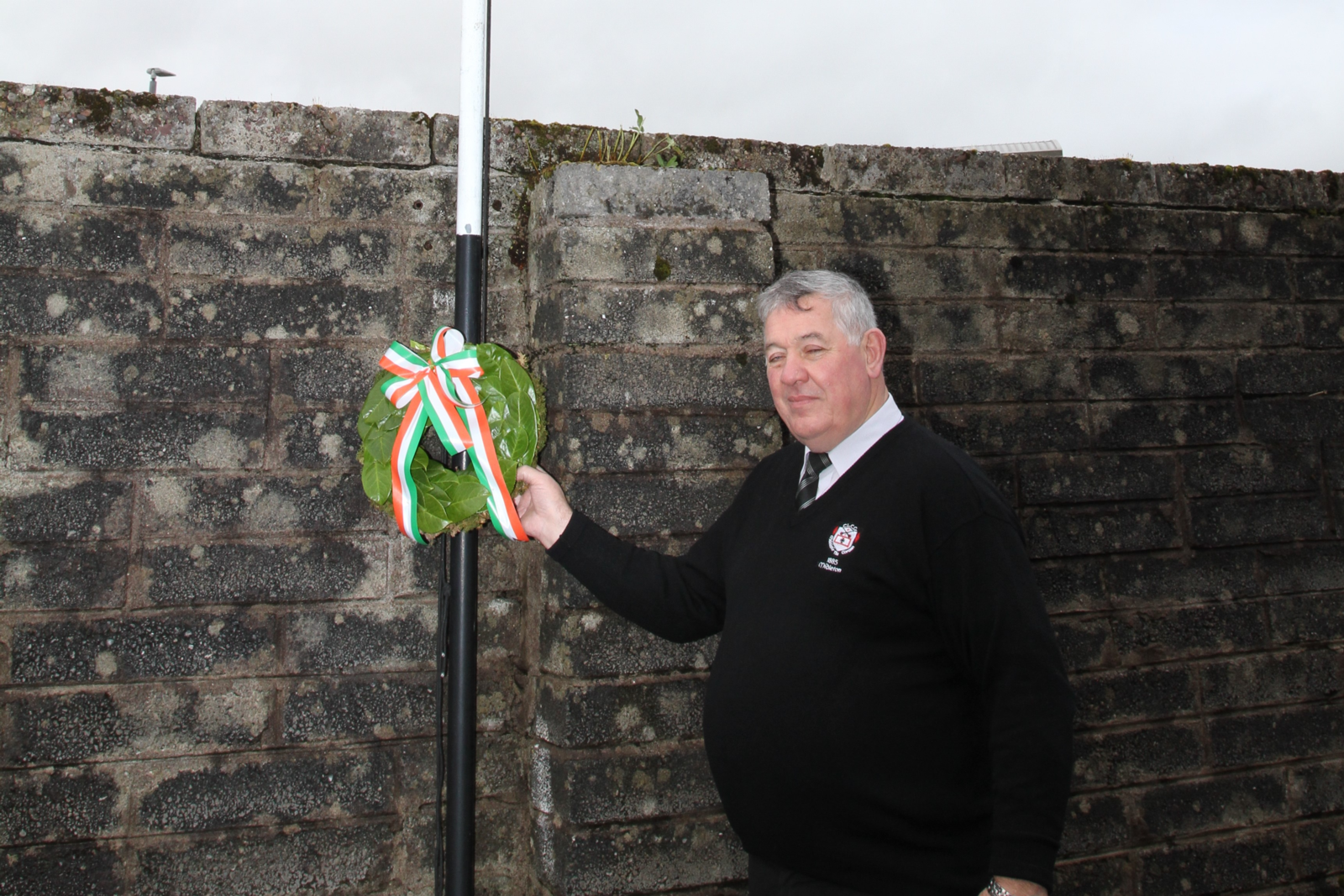
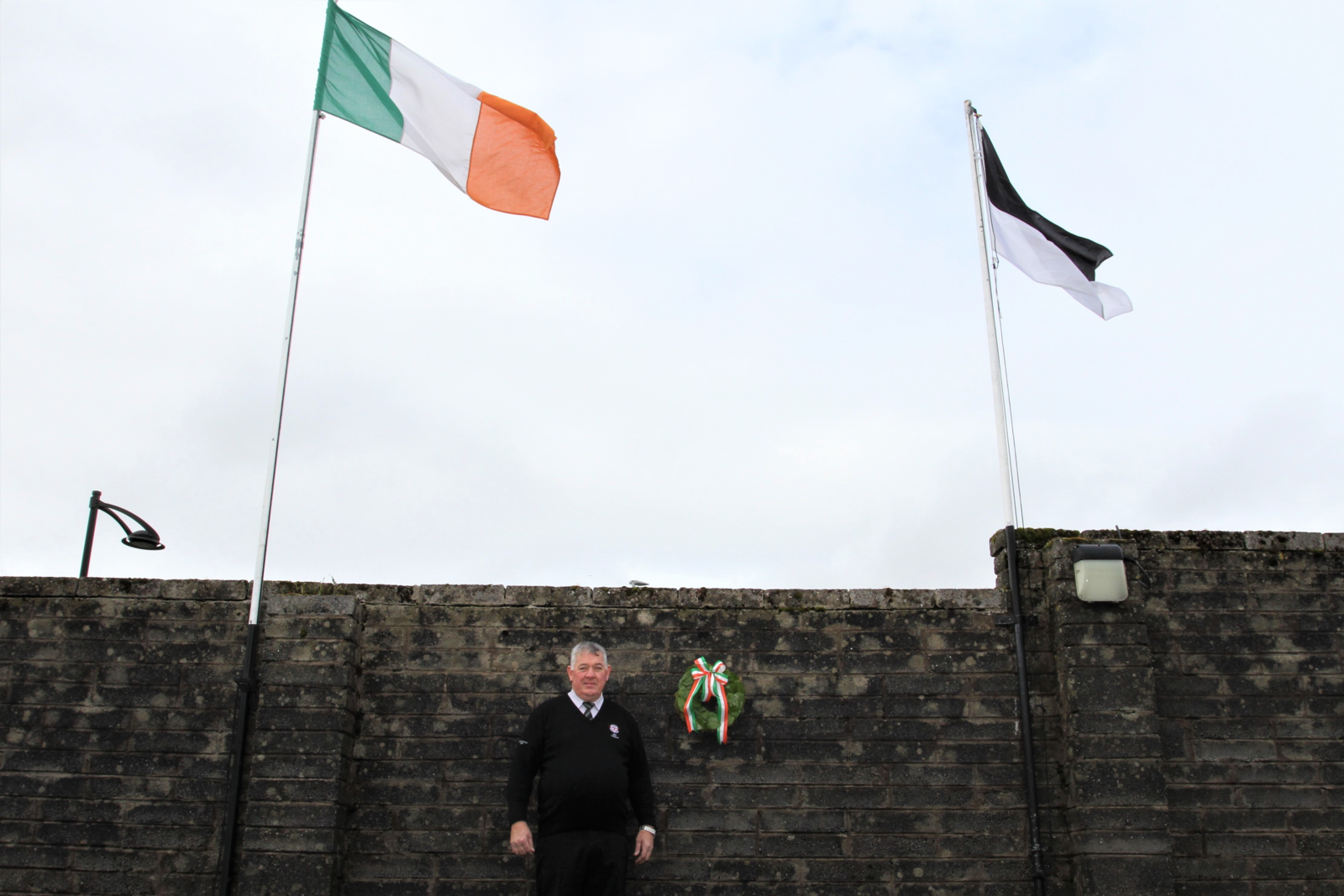
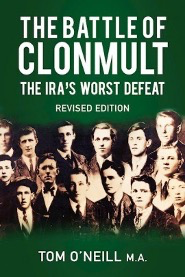
Subject to COVID restrictions other commemoration events will be organised by Midleton GAA.
“Portraits of Clonmult Patriots Series”
William Garde, Ballycotton
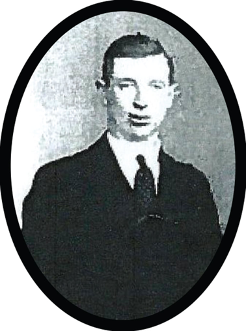
At the time of the battle of Clonmult, William Garde was not yet eighteen years of age. He lived on the Family farm at Ballynamona, Ballycotton with his parents Robert and Mary, they had six children, Michael, James, Mary, Margaret William and Robert.
On Sunday morning, the 20th of February, William Garde drove his mother to Ballycotton mass and met his first cousin Robert Walsh afterwards. They had dinner together in Garde’s house and then decided to go for a cycle. They left Garde’s house around 12.30. They met their friends Edmond Terry and John Harty in Ladysbridge. Edmond Terry said he was going to see his grandmother in Clonmult as she was ill. The two of them decided to go to Clonmult with John Harty and Edmond Terry.
From there, the four cycled to Clonmult, arriving in the village at around 2.30 pm. Edmond Terry went to his grandmother’s house, which was at the crossroads in the village and while there drank a cup of tea. Meanwhile, the other three waited outside the house where they met Dick Hegarty who was returning to the Column after being at home near Garryvoe for the weekend. Later, When Edmond Terry re-joined them, Dick Hegarty brought the four to the farmhouse where the column was based. The four boys remained in the farmyard and Dick Hegarty went inside.
They were at the farmhouse about ten minutes when someone shouted at them to come inside, immediately after this the shooting started. The four boys were about to experience the most terrifying afternoon of their lives, an afternoon they would never forget. William Garde and his three friends spent the duration of the battle on the floor, between the window and the door, sheltering under a strong table. The noise of the rifles being fired by the IRA defenders in the house and the sound of the bullets being fired into the house by the British soldiers must have been deafening.
After about two hours, someone shouted “on what conditions will we surrender, will we be shot?” The answer came “no, come out with your hands up.” At that stage, the thatch room of the farmhouse had been set on fire by Lieut Hammond using petrol and grenades and those trapped inside were choking with the smoke. To add to the plight of the trapped IRA men, the Auxiliary Police had arrived to reinforce the British Army. The immediate prospect for the IRA men and the trapped boys was bleak indeed. Their choice was burn to death or surrender.
Following the decision by Capt Paddy Higgins to surrender, eight members of the column and the four boys came out of the farmhouse with their hands up and three others were delayed inside. William Garde emerged from the house after the surrender with his hands up. He saw police and soldiers in the yard and he was ordered up against the wall of the cowshed. Shortly afterwards he heard shots and he saw three or four of the prisoners fall. It was at that stage that William Garde was shot.
Amazingly the four young cyclists, William Garde, Edmond Terry, John Harty and Robert Walsh all survived the killing spree, even though the first three were wounded. While their age cannot be the only reason they were not killed, because James Glavin was younger, my belief is that a contributory factor was they were dressed entirely in civilian attire, whereas the others as members of the column would have been wearing items of military dress. Something like not wearing high boots, leggings or a military belt may have saved their lives. The only other survivor was Capt Paddy Higgins and he had a miraculous escape when he was shot in the mouth.
This brought the total of IRA men killed at Clonmult to twelve. Only Capt Jack O’Connell had managed to break through the British cordon. There were no Crown Forces killed at Clonmult.
The bodies of the twelve dead volunteers were left at the battle site that night. The eight prisoners, including William Garde, were taken to the RIC Barracks in Midleton to be identified and from there to Victoria Barracks, Cork. After arriving in Victoria Barrack the five wounded prisoners including William Garde, were taken to the Central Military Hospital to have their wounds dressed. The three unwounded prisoners including Maurice Moore were lodged in the Brigade Cage, located on the edge of the barrack square. This Cage was where British Army patrols lodged their prisoners for processing. The following day the three prisoners were moved across the road to the Military Detention Barracks, to await their fate.
On the 1st of March, 1921, a summary of the evidence against seven of the men captured at Clonmult was taken in Victoria Barracks, Cork. The eighth, Capt Paddy Higgins was still medically unfit to stand trial. The trial of the accused by Military Court began in the gymnasium of Victoria Barracks, on Tuesday, 8th of March 1921.
The seven named accused, including William Garde, all in the county of Cork, civilians, were charged:
‘With committing an offence in that they, at Clonmult, in the County Cork, on the 20th day of February, 1921, did, with other persons unknown, levy war against His Majesty by attacking with arms a detachment of His Majesty’s Forces.’
To be tried by Military Court,
Signed, E P Strickland, Major General
Commanding 6th Division & Military Governor, 7/3/21
While being examined in the course of his trial by Military Court in Victoria Barracks, William Garde stated that he was not a member of Sinn Féin, Irish Volunteers, Fianna or the IRA. The main points of his evidence were as mentioned previously and were similar to those given as evidence by John Harty.
During his trial William Garde stated that he slept at home on the night of the 19th of February and drove his mother to Ballycotton mass and met his first cousin Robert Walsh there. The main part of his evidence was the same as that given by Robert Walsh, as detailed above. Detailing the events following his surrender, he stated that he was the second out the door and the police and soldiers were in front of him. The shooting started when they were about 25 yards out and he saw the man in front of him fall. William Garde stated that:-
‘I had my hands up when I was shot, the man in front had his hands up until he fell. I heard six or seven shots and they came from the direction from where the police were standing. The police had revolvers in their hands and I saw smoke coming from them. The first shot I heard after coming out of the house was the shot that hit the man in front of me. I think the second shot hit me. We were then taken prisoner, searched and marched across the fields to the lorries and from there to Cork’.
The tenth witness in the Military Court on Wednesday 16th of March was Mr Robert Garde, farmer and father of the accused William Garde. He confirmed that William was seventeen since the previous December and that William had two brothers and two sisters. That William had left school about two years previously and had been following horses and doing some farm work. He also stated that the accused Robert Walsh was William’s first-cousin. His evidence corresponded with the details given as evidence by his son of the events of the Sunday morning. He said that he knew Sgt Donaldson of the RIC in his district and that he had known him for eight years. He stated that there were no firearms in his house and that his son had no firearms.
Cross-examined by the prosecutor he stated that his son never told him anything about what he proposed to do on Sunday 20th February.
The eleventh witness was Mrs Mary Garde and sworn stated that she was the mother of the accused William Garde. Her evidence regarding the Sunday morning was as given by her son and husband. She further stated that her son was not in any illegal organisation and that there were no firearms in her house.
Cross-examined by the Prosecutor, she stated that she knew that any illegal organisation is anything against His Majesty. She also stated that her son William and his friend Robert Walsh had dinner together in her house before setting off that day.
Examined by the Court, she stated that she heard on Tuesday 22nd that William had been arrested. When he hadn’t returned by 6 o’clock on the Sunday evening she became very uneasy.
During the trial, a letter was produced by Mr. Comyn, from RIC Sergeant Donaldson of Ballycotton, in which Robert Walsh and William Garde were given excellent character references.
The outcome of the trial was that all seven accused were found guilty as charged. The three members of the column were sentenced to death by firing squad and the four cyclists were sentenced to Penal Servitude for Life.
Capt Patrick O’Sullivan and Vol Maurice Moore were executed in the Military Detention Barracks, Cork, on the 28th of April. Capt Diarmuid O’Leary had his death sentence commuted to Penal Servitude for Life.
On the 30th April, two days after the executions of their comrades, William Garde and four other Clonmult prisoners, Diarmuid O’Leary, John Harty, Edmond Terry and Robert Walsh were transferred from the Military Detention Barracks to the ‘Military Prison in the Field’ on Spike Island, which was for convicted republican prisoners and internees. On the 17th of November 1921, all five were part of a large group of prisoners transferred from Spike Island to Kilkenny Gaol. Later they were transferred to Waterford Prison from where they were released in February 1922 following the ratification of the 1921 Anglo Irish Treaty.
For the complete story of the battle of Clonmult, see,
‘The Battle of Clonmult’ by Tom O’Neill, published in 2019.
Volunteer John Joe Joyce, Midleton
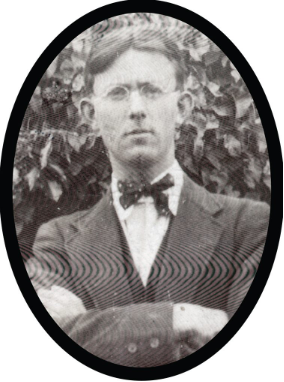
Volunteer John Joe Joyce was twenty-two years old, single and he lived in the family home and shop with his parents Eugene and Mary Joyce at 16 Main Street, Midleton. He was the oldest of eight children, three boys and five girls, John Joe, Mary Rose, Elanor, Margaret Mary, Edmond Vincent, Angela Mary, Bridget Mary and Owen Malachy.
He was educated at Christian Brothers College Cork where he won a scholarship to University College Cork, (UCC). He initially studied medicine in UCC before changing to engineering. He was interested in all aspects of Gaelic culture and he was a fluent Irish speaker and a medal winner at Feiseanna for violin playing. His skill at hurling was acclaimed as a member of the UCC Fitzgibbon Cup hurling team that represented Cork in an All-Ireland final.
While a student in UCC Vol John Joe Joyce became actively involved in the IRA with his friend and fellow engineering student Michael V. O’Donoghue from Lismore, Co. Waterford. Both men shared lodgings while in college and both put their studies to one side in order to devote their time to military operations with their respective battalions. John Joe with the Fourth Battalion flying column and Michael became the Engineering Officer with the Second Battalion in Cork City. Michael O’Donoghue was the President of the GAA from 1952 – 1956.
There was a long tradition of nationalism in the Joyce family dating back to the time of the Land League. John Joe’s brother Edmund was a member of the IRA’s youth organisation, Na Fianna. John Joe’s sister Mary Rose (Ciss), was a very active member of the Cumann na mBan. She later married her namesake Thomas Carey Joyce from Kilmurry near Kilworth, Co. Cork, who was also very active in the Volunteers and later the IRA. During 1921 Thomas Carey Joyce was captured by Crown Forces and imprisoned in Kilworth Army Camp as an internee. He was later transferred to Spike Island and Maryborough (Portlaoise) Prison from where he was released in December 1921.
On the afternoon of Sunday, 20th February, Vol John Joe Joyce was preparing for the march out with the column to their new base at Duneen near Leamlara, when the farmhouse was surrounded by British soldiers. At the time Volunteers John Joe Joyce and Michael Desmond were going to the well to fill water bottles for the column, when they spotted the British soldiers. The two volunteers attempted to fight their way back to the farmhouse to warn their comrades that the house was being surrounded. The two volunteers became engaged in a very brief gun battle with the British soldiers belonging to Lt Koe’s patrol, as the soldiers were manoeuvring to surround the house. The two IRA men were each armed with revolvers, one also had a rifle with a fixed bayonet, while the other had a double barrel shotgun. Both were outgunned as well as being outnumbered by the British troops. This one sided engagement was quickly over with both IRA men were gunned down and killed. Volunteers John Joe Joyce and Michael Desmond died at the rear or north side of the farmhouse.
Capt Jack O’Connell, the acting column commander, decided correctly that an aggressive breakout by the IRA men from the farmhouse was their best option. However, only four of the trapped men agreed to make the attempt with him. Capt Jack O’Connell led the breakout, he took the British soldiers by surprise and got through the cordon. Unfortunately three of the four men after him were shot dead in their attempt. The last man to try was Capt J O’Leary, he reached the safety of the cowshed and dashed back into the farmhouse under a hail of bullets, none of which hit him.
There was a stalemate in the battle until the British Army was reinforced by the Auxiliary Police. Shortly afterwards the thatch roof was set on fire and the volunteers trapped inside had no option but to surrender. Capt Paddy Higgins took the decision to surrender approximately fifteen minutes after the roof was set on fire.
Twelve of the trapped IRA men exited the farmhouse to surrender and all were ordered to line up against the east wall of the cowshed. Almost immediately the Auxiliary Police opened fire with their revolvers at close range and killed seven of their twelve prisoners. Vol David Desmond, Vol Donal Dennehy, Vol William Ahern, his first-cousin Vol Jeremiah Ahern, Lt Christopher O’Sullivan, Joseph Morrissey and James Glavin were all shot dead. A British Army officer regained control of the Auxiliaries and stopped further killings and thus saved the lives of the remaining prisoners.
On Monday morning, 21st February, the National newspapers gave brief details of the battle and had thirteen as the number of IRA men killed. However, due to the confusion of the battle, it is understandable that this incorrect figure was given. In reality, twelve IRA men had been killed and their bodies had been left overnight beside the smouldering ruin of what had been their billet at Clonmult. The British troops returned to collect the bodies on Monday morning around 9.00 o’clock and carried out a more thorough search of the immediate area. The British were convinced that the body of the column commander had been removed by the IRA during the night, this gave rise to the figure of thirteen killed.
Information on the battle gradually reached the families of the column members on Sunday night and Monday morning. During Monday, a special meeting of Midleton U.D.C. was held and a vote of sympathy was passed to the families of the deceased.
On Monday morning the British army trucks were driven down a narrow lane that ran from Carey’s cottage to the farmhouse. The remains of the twelve dead republicans were loaded onto the trucks and were conveyed directly to the mortuary located at the rear of the hospital block in Victoria Barracks, Cork. There they were received and labelled for identification by the military doctor on duty, Capt J B Morrison, Royal Army Medical Corps, (RAMC). Capt Morrison carried out an examination on all of the bodies that day.
On Wednesday morning, 23rd of February, a ‘Military Court of Inquiry in lieu of an Inquest’ was set up in Victoria Barracks. Its purpose was to investigate and report upon the circumstances under which the twelve civilians met their deaths. The court having assembled pursuant to order proceeded to view the bodies of the twelve civilians at the Military Hospital, Cork and to take evidence on oath.
The sixth body to be identified was Vol John Joseph Joyce. He was identified by his sister, Miss Mary Rose (Ciss) Joyce who gave her address as Dunbar Street, Cork. She was accompanied by her cousin Lil O’Callaghan (nee Ahern), Lisgoold. She stated that he was her brother, that he resided in Midleton, was unmarried, age twenty-two and was a student at the University of Cork. The medical evidence was that Vol John Joe Joyce had been fatally shot by Crown Forces in the execution of their duty.
On Wednesday the bodies were released to their families and were removed from Victoria Barracks late that evening. The cortege carrying the twelve coffins travelled together as far as Cobh Cross and from there the coffins of James Ahern and James Glavin were taken to St. Colman’s Cathedral in Cobh. The remaining ten coffins were taken to the Church of the Most Holy Rosary, Midleton, by lorry, where they arrived at about 10.00pm. ‘Crowds had been gathering in the town from 4.00 pm and the church bell had been ringing since about that time. It was a fine, dry, calm night, though somewhat cold, and a deep silence pervading the whole scene at such an hour at night, the event was undoubtedly solemn, and was one calculated never to be forgotten by those who were present on the sad occasion’. The coffins were shouldered from the Cork side of the town to the church where they were placed in front of the high altar.
Following Requiem High Mass at 10.00 am on Thursday 24th February in Holy Rosary Church, the nine coffins of the local men, including Volunteer John Joe Joyce, were laid to rest in the Republican Plot. The coffins were draped in tricolours and there were innumerable wreaths.
Volunteer John Joe Joyce died for Ireland at Clonmult, on Sunday, 20th February, 1921.
Ar dheis Dé go raibh a anam.
For the complete story of the battle of Clonmult, see,
‘The Battle of Clonmult’ by Tom O’Neill, published in 2019.
Na Fianna Volunteer Edmond Terry, Churchtown South
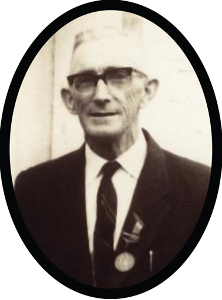
At the time of the battle of Clonmult, Edmond Terry was 17 years of age, a farmer’s son and he lived in Ballylanders, Churchtown South, Co. Cork with his father John and mother Mary. They had eight children, Charles, Ellen, Nora, Edmond, Frances, John, Paul and Geraldine. Edmond Terry worked as an apprentice carpenter for David McGuire. Edmond Terry lived in David McGuire’s house during the week because they started work at 7.00 am and worked late in the evening. Because he was indentured, he was entitled to free board in the McGuire’s house. On Sunday the 20th of February 1921, the day of the battle, he went to 9.30 am mass in Churchtown South and afterwards he met his friend John Harty. After mass Edmond Terry went to Hennessy’s to buy cigarettes the members of the column and for his grandmother Mrs Ellen Fitzgerald, who lived in Clonmult. Edmond Terry and John Harty decided that they would both go to Clonmult that afternoon. The two friends went to Harty’s for their dinner.
They set off for Clonmult about 1.15 pm going via Cloyne. Continuing on their way, they met their friends Robert Walsh from Ballycotton and William Garde from Shanagarry, in Ladysbridge. From there, the four cycled to Clonmult, arriving in the village at around 2.30 pm. Edmond Terry went to his grandmother’s house, which was at the crossroads in the village and while there drank a cup of tea. Meanwhile, the other three waited outside the house where they met Dick Hegarty who was returning to the Column after being at home near Garryvoe for the weekend. Later, When Edmond Terry rejoined them, Dick Hegarty brought the four to the farmhouse where the column was based. The four boys remained in the farmyard and Dick Hegarty went inside.
They were at the farmhouse about ten minutes when someone shouted at them to come inside, immediately after this the shooting started. The four boys were about to experience the most terrifying afternoon of their lives, an afternoon they would never forget. Edmond Terry and his three friends spent the duration of the battle on the floor, between the window and the door, sheltering under a strong table. The noise of the rifles being fired by the IRA defenders in the house and the sound of the bullets being fired into the house by the British soldiers must have been deafening.
After about two hours, someone shouted “on what conditions will we surrender, will we be shot?” The answer came “no, come out with your hands up.” At that stage, the thatch room of the farmhouse had been set on fire by Lieut Hammond using petrol and grenades and those trapped inside were choking with the smoke. To add to the plight of the trapped IRA men, the Auxiliary Police had arrived to reinforce the British Army. The immediate prospect for the IRA men and the trapped boys was bleak indeed. Their choice was burn to death or surrender.
Following the decision by Capt Paddy Higgins to surrender, eight members of the column and the four boys came out of the farmhouse with their hands up and three others were delayed inside. Edmond Terry emerged from the house after the surrender with his hands up. He saw police and soldiers in the yard and he was ordered up against the wall of the cowshed. Shortly afterwards he heard shots and he saw three or four of the prisoners fall and it was at this stage he received his three gunshot wounds, two in the stomach and one in the wrist. After being shot in the wrist he fell completely unconscious. Later after being searched, he was marched across the fields to the trucks. He spent three days, from Sunday to Wednesday in the General Military Hospital in Victoria Barracks.
Amazingly the four young cyclists, Edmond Terry, John Harty, William Garde and Robert Walsh all survived the killing spree, even though the first three were wounded. While their age cannot be the only reason they were not killed, because James Glavin was younger, my belief is that a contributory factor was they were dressed entirely in civilian attire, whereas the others as members of the column would have been wearing items of military dress. Something like not wearing high boots, leggings or a military belt may have saved their lives. The only other survivor was Capt Paddy Higgins and he had a miraculous escape when he was shot in the mouth.
This brought the total of IRA men killed at Clonmult to twelve. Only Capt Jack O’Connell had managed to break through the British cordon. There were no Crown Forces killed at Clonmult.
The bodies of the twelve dead volunteers were left at the battle site that night. The eight prisoners, including Edmond Terry, were taken to the RIC Barracks in Midleton to be identified and from there to Victoria Barracks, Cork. After arriving in Victoria Barrack the five wounded prisoners including Edmond Terry, were taken to the Central Military Hospital to have their wounds dressed. The three unwounded prisoners including Maurice Moore were lodged in the Brigade Cage, located on the edge of the barrack square. This Cage was where British Army patrols lodged their prisoners for processing. The following day the three prisoners were moved across the road to the Military Detention Barracks, to await their fate.
On the 1st of March, 1921, a summary of the evidence against seven of the men captured at Clonmult was taken in Victoria Barracks, Cork. The eighth, Capt Paddy Higgins was still medically unfit to stand trial. The trial of the accused by Military Court began in the gymnasium of Victoria Barracks, on Tuesday, 8th of March 1921.
The seven named accused, including Edmond Terry, all in the county of Cork, civilians, were charged:
‘With committing an offence in that they, at Clonmult, in the County Cork, on the 20th day of February, 1921, did, with other persons unknown, levy war against His Majesty by attacking with arms a detachment of His Majesty’s Forces.’
To be tried by Military Court,
Signed, E P Strickland, Major General
Commanding 6th Division & Military Governor, 7/3/21
While being examined in the course of his trial by Military Court in Victoria Barracks, Edmond Terry stated that he was not a member of Sinn Féin, Irish Volunteers, Fianna or the IRA. The main points of his evidence were as mentioned previously and were similar to those given as evidence by John Harty.
The first witness on Tuesday, 15th of March, was Mrs Mary Josephine Terry, mother of Edmond. She had five other sons, the eldest being twenty-three. She stated that Edmond was seventeen in April 1920 and that he was apprenticed to David McGuire and was due out of his apprenticeship in May 1921. She stated that her son was a steady boy and in no way a wild boy. She confirmed that her mother, Mrs Fitzgerald lived in Clonmult and that two of her daughters, Ellen and Nora, lived with her. She corroborated the evidence given by her son, and added that before both of them went to 9.30 am mass she had given him money for ‘fags’ for his grandmother. She stated that, he borrowed a friends bicycle, as his own was out of order. She knew John Harty very well and had only heard of William Garde and Robert Walsh from her son.
David McGuire was the next witness and sworn stated, that he was a general carpenter and that the accused had been indentured to him as an apprentice since 14th May 1917. The accused lived in David McGuire’s house during the week because they started work at 7.00 am and worked late in the evening and as he was indentured he was entitled to free board. He said that Edmond Terry was a hard working boy and would not have time for philandering about, was not a member of any illegal organisation and had never seen guns in his possession.
Ellen Terry, sister of the accused was the next witness and sworn stated that she lived in Clonmult with her grandmother, Mrs Ellen Fitzgerald. She confirmed that her brother visited them on 20th February and that she saw John Harty speaking to two others outside at the cross-roads. She further stated that when her brother left the house there was another man after joining the group. She didn’t know him.
The outcome of the trial was that all seven accused were found guilty as charged. The three members of the column were sentenced to death by firing squad and the four cyclists were sentenced to Penal Servitude for Life.
The evidence given to the British Army Military Court by Edmond Terry and his co-defendants could not have been further from the truth. The reality was that Edmond Terry and his friend John Harty, were both members of Na Fianna, the IRA youth organisation. The two boys had arranged that they would take funds that had been collected from the farmers in their area to the column headquarters. This money was levied on farmers and used as a war chest by the IRA. The column base camp at Clonmult was a collecting point for such monies. They had also agreed to bring cigarettes and clean laundry with them for the IRA men. The four cycled to Clonmult village, arriving there just before Dick Hegarty. While in Clonmult village Edmond Terry took the opportunity to visit his grandmother, Mrs Fitzgerald.
Two of the three IRA men sentenced to death were executed in the Military Detention Barracks, Cork, on the 28th of April. Capt Diarmuid O’Leary had his death sentence commuted to Penal Servitude for Life.
On the 30th April, two days after the executions of their comrades, Edmond Terry and four other Clonmult prisoners, Diarmuid O’Leary, John Harty, William Garde and Robert Walsh were transferred from the Military Detention Barracks to the ‘Military Prison in the Field’ on Spike Island, which was for convicted republican prisoners and internees. On the 17th of November 1921, all five were part of a large group of prisoners transferred from Spike Island to Kilkenny Gaol. Later they were transferred to Waterford Prison from where they were released in February 1922 following the ratification of the 1921 Anglo Irish Treaty.
For the complete story of the battle of Clonmult, see,
‘The Battle of Clonmult’ by Tom O’Neill, published in 2019.
Na Fianna Volunteer John Harty, Cloyne
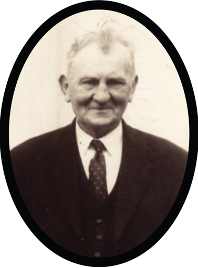

At the time of the battle of Clonmult, John Harty was 18 years of age, he was a farmer’s son. He lived with his parents John and Mary in the townland of Ballyroe, located between Cloyne and Churchtown South, Co. Cork. John had five sisters and one brother, Margaret, Michael, Frances, Bridget, Abina, and Mary. On Sunday, the 20th of February 1921, the day of the battle, he went to 9.30 am mass in Churchtown South and afterwards he met his friend Edmond Terry. Later Edmond Terry went to Hennessy’s shop to buy cigarettes for the members of the column and for his grandmother, Mrs Ellen Fitzgerald, who lived in Clonmult. They were both going to Clonmult that afternoon to bring funds and cigarettes to the column. They went to Harty’s for their dinner. John Harty had to borrow his sister’s bicycle for the journey to Clonmult.
The two friends set off for Clonmult at about 1.15 pm, going via Cloyne. Continuing on their way through Ladysbridge, they met their friends Robert Walsh from Ballycotton and William Garde from Shanagarry. From there, the four cycled to Clonmult, arriving in the village at around 2.30 pm. Edmond Terry went to his grandmother’s house, which was at the crossroads in the village and while there he drank a cup of tea. Meanwhile, the other three waited outside the house where they met Dick Hegarty who was returning to the column after being at home near Garryvoe for the weekend. Later, When Edmond Terry rejoined them, Dick Hegarty brought the four to the farmhouse where the column was based. The four boys remained in the farmyard and Dick Hegarty went inside.
They were about ten minutes at the farmhouse when someone shouted at them to come inside, immediately after this the shooting started. The four boys were about to experience the most terrifying afternoon of their lives, an afternoon they would never forget. John Harty and his friends spent the duration of the battle on the floor, between the window and the door, sheltering under a strong table. The noise of the rifles being fired by the IRA defenders in the house and the sound of the bullets being fired into the house by the British soldiers must have been deafening.
After about two hours, John Harty heard someone shout “on what conditions will we surrender, will we be shot?” The answer came “no, come out with your hands up.” At that stage, the thatch roof of the farmhouse had been set on fire by Lieut Hammond using petrol and grenades and those trapped inside were choking with the smoke. To add to the plight of the trapped IRA men, the Auxiliary Police had arrived to reinforce the British Army. The immediate prospect for the IRA men and the trapped boys was bleak indeed. Their choice was burn to death or surrender.
Following the decision by Capt Paddy Higgins to surrender, eight members of the column and the four boys came out of the farmhouse with their hands up and three others were delayed inside. John Harty stated later at his trial that: ‘after the surrender he was the third or fourth out of the house and when he was about 25 yards outside the door he was passing between a group of soldiers and police when he was hit on the side of the head by something, he thought it was the butt end of a rifle. He got up again and went over to where seven or eight men were standing beside the wall of the barn. The men standing against the wall with him were, Edmond Terry, William Garde and Robert Walsh, he didn’t know the others’. While the twelve were lined up along the east wall of the cowshed with their hands up the Auxiliaries opened fire and killed seven of the twelve prisoners.
Amazingly the four young cyclists, John Harty, William Garde, Edmond Terry and Robert Walsh all survived the killing spree, even though the first three were wounded. While their age cannot be the only reason they were not killed, because James Glavin was younger, my belief is that a contributory factor was they were dressed entirely in civilian attire, whereas the others, as members of the column, would have been wearing items of military dress. Something like not wearing high boots, leggings or a military belt may have saved their lives. The only other survivor was Capt Paddy Higgins and he had a miraculous escape when he was shot in the mouth.
This brought the total of IRA men killed at Clonmult to twelve. Only Capt Jack O’Connell had managed to break through the British cordon. There were no Crown Forces killed at Clonmult.
The bodies of the twelve dead IRA volunteers were left at the battle site that night. The eight prisoners, including John Harty, were taken to the RIC Barracks in Midleton to be identified and from there to Victoria Barracks, Cork. After arriving in Victoria Barrack the five wounded prisoners including John Harty, were taken to the Central Military Hospital to have their wounds dressed. The three unwounded prisoners were lodged in the Brigade Cage, located on the edge of the barrack square. This wire enclosed cage was where British Army patrols lodged their prisoners for processing. The following day the three prisoners were moved across the road to the Military Detention Barracks, to await their fate.
On the 1st of March, 1921, a summary of the evidence against seven of the men captured at Clonmult was taken in Victoria Barracks, Cork. The eighth, Capt Paddy Higgins, was still medically unfit to stand trial. The trial of the accused by Military Court began in the gymnasium of Victoria Barracks, on Tuesday, the 8th of March 1921.
The seven named accused, including John Harty, all in the county of Cork, civilians, were charged:
‘With committing an offence in that they, at Clonmult, in the County Cork, on the 20th day of February, 1921, did, with other persons unknown, levy war against His Majesty by attacking with arms a detachment of His Majesty’s Forces.’
To be tried by Military Court,
Signed, E P Strickland, Major General
Commanding 6th Division & Military Governor, 7/3/21
While being examined in the course of his trial, John Harty stated that he spent three days in the military hospital. In cross-examination he further stated that he was not a member, had never been a member or had ever been asked to join a Sinn Féin club. He said that he thought there was a Sinn Féin club in Churchtown and that he didn’t know if there was one in Cloyne. He also stated that he was not a member and had never been a member of the Irish Volunteers or the IRA.
The eighth witness for the defence, Miss Margaret Harty, sworn stated, she was the oldest in the family and sister of the accused John Harty and had one other brother. On the 20th of February, she went to 8.30 am mass in Cloyne, returning home about 10.00 am. After dinner her brother asked her for permission to borrow her bicycle, as Edmond Terry had asked him to go to Clonmult. One of them gave her some cigarettes before they left.
Cross-examined by the Prosecutor, she stated that her brother often gave her cigarettes and that she often lent him her bicycle, mainly on Sunday afternoons. She did not know the make or number of her bicycle, but she would know it again because the carrier was broken.
The outcome of their trial was that all seven accused were found guilty as charged. The three members of the column were sentenced to death by firing squad and the four cyclists were sentenced to Penal Servitude for Life.
The evidence given to the British Army Military Court by John Harty and his co-defendants could not have been further from the truth. The reality was that John Harty and his friend Edmond Terry, were both members of Na Fianna, the IRA youth organisation. The two boys had arranged that they would take funds that had been collected from the farmers in their area, to the column headquarters. This money was levied on farmers and used as a war chest by the IRA. The column base camp at Clonmult was a collecting point for such monies. The funds would later be transferred to IRA Brigade Headquarters in Cork City. They had also agreed to bring cigarettes and clean laundry with them for the IRA men.
Two of the IRA men sentenced to death, Patrick O’Sullivan and Maurice Moore, were executed in the Military Detention Barracks, Cork, on the 28th of April. Capt Diarmuid O’Leary had his death sentence commuted to Penal Servitude for Life.
On the 30th April, two days after the executions of their comrades, John Harty and four other Clonmult prisoners, Diarmuid O’Leary, William Garde, Edmond Terry and Robert Walsh were transferred from the Military Detention Barracks to the ‘Military Prison in the Field’ on Spike Island, which was for convicted republican prisoners and internees. On the 17th of November 1921, all five were part of a large group of prisoners transferred from Spike Island to Kilkenny Gaol. Later they were transferred to Waterford Prison from where they were released in February 1922, following the ratification of the 1921 Anglo Irish Treaty. John Harty died on the 11th of January 1967.
For the complete story of the battle of Clonmult, see,
‘The Battle of Clonmult’ by Tom O’Neill, published in 2019.



